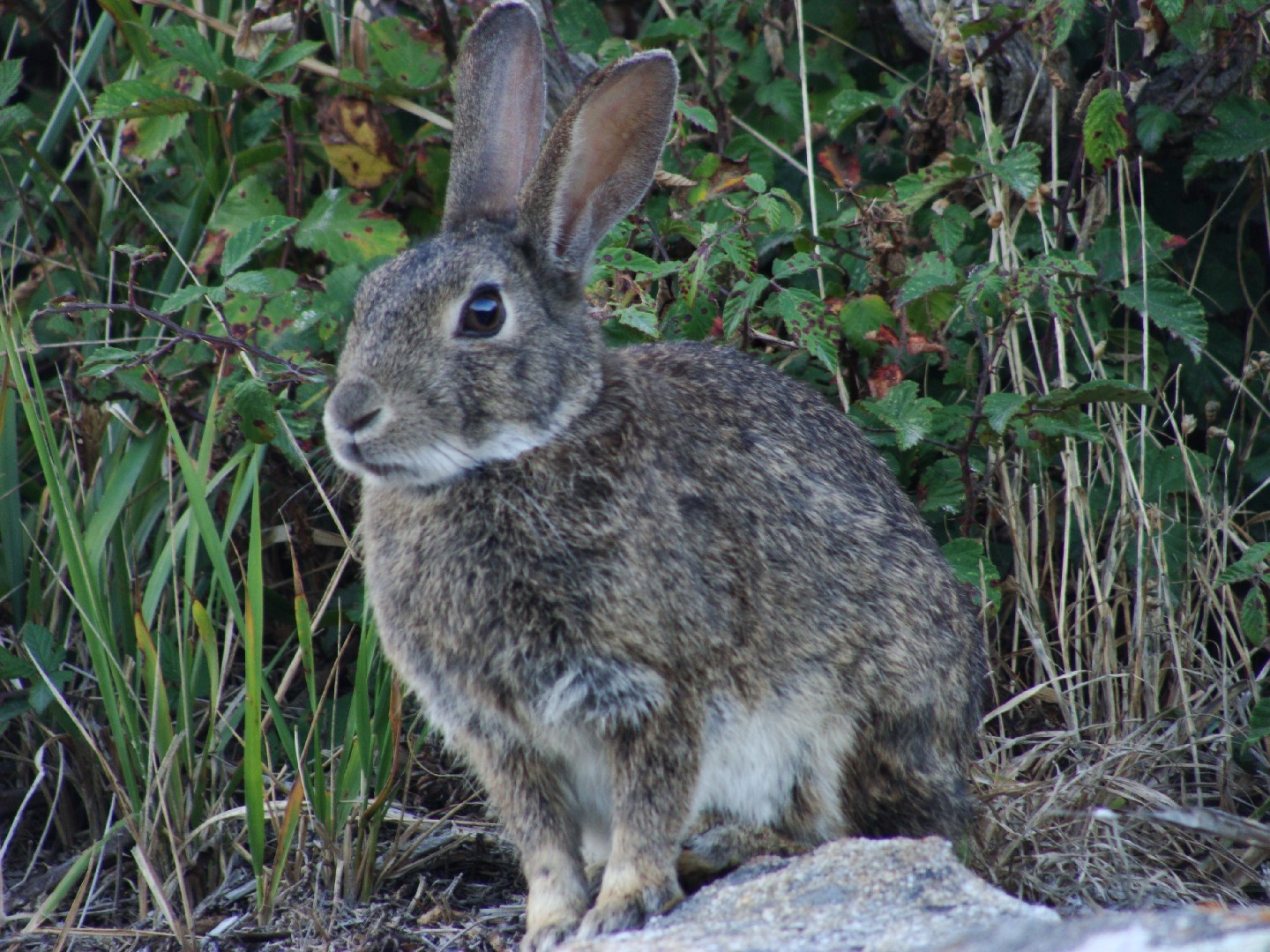European rabbit
A species of European rabbit, Also known as Lop rabbit, Easter bunny, House rabbit, Lop-eared rabbit Scientific name : Oryctolagus cuniculus Genus : European rabbit
European rabbit, A species of European rabbit
Also known as:
Lop rabbit, Easter bunny, House rabbit, Lop-eared rabbit
Scientific name: Oryctolagus cuniculus
Genus: European rabbit
Content
Description General Info
 Photo By Fernando Losada Rodríguez , used under CC-BY-SA-4.0 /Cropped and compressed from original
Photo By Fernando Losada Rodríguez , used under CC-BY-SA-4.0 /Cropped and compressed from original Description
The European rabbit is smaller than the brown and mountain hare, and lacks black ear-tips, as well as having proportionately shorter legs. An adult European rabbit can measure 40 centimetres (16 in) in length, and weigh 1,200–2,000 grams (2.6–4.4 lb). The hind foot measures 8.5–10 centimetres (3.3–3.9 in) in length, while the ears are 6.5–7.5 centimetres (2.6–3.0 in) long from the occiput. Size and weight varies according to food and habitat quality, with rabbits living on light soil with nothing but grass to feed on being noticeably smaller than specimens living on highly cultivated farm-lands with plenty of roots and clover. Pure European rabbits weighing 5 kilograms (11 lb) and upwards are uncommon, but are occasionally reported. One large specimen, caught in February 1890 in Lichfield, was weighed at 2.8 kilograms (6 lb 2 oz). Unlike the brown hare, the male European rabbit is more heavily built than the female. The penis is short, and lacks a baculum and true glans. The fur of the European rabbit is generally greyish-brown, but this is subject to much variation. The guard hairs are banded brown and black, or grey, while the nape of the neck and scrotum are reddish. The chest patch is brown, while the rest of the underparts are white or grey. A white star shape is often present on kits' foreheads, but rarely occurs in adults. The whiskers are long and black, and the feet are fully furred and buff-coloured. The tail has a white underside, which becomes prominent when escaping danger. This may act as a signal for other rabbits to run. Moulting occurs once a year, beginning in March on the face and spreading over the back. The underfur is completely replaced by October–November. The European rabbit exhibits great variation in colour, from light sandy, to dark grey and completely black. Such variation depends largely on the amount of guard hairs relative to regular pelage. Melanists are not uncommon in mainland Europe, though albinoes are rare. 
General Info
Lifespan
8-12 years
Diet
European rabbit is predominantly an herbivorous species, mainly grazing on grasses. Its diet extends to incorporate leafy weeds, bark from trees, and various fruits and vegetables. They also practice coprophagy to optimize nutrient absorption.
Appearance
The european rabbit is a medium-sized mammal with a compact body shape and soft fur. Its coloration ranges from shades of brown, grey, and black to white. Notable features include long ears, large hind legs for jumping, and a fluffy tail. Age affects its size and fur thickness, while gender differences are minimal. Some subspecies may exhibit unique color patterns.
Behavior
European rabbit is social, inhabiting complex burrow systems in groups. They feed primarily on grasses, foraging mainly at dawn and dusk to avoid predators. European rabbit exhibit grooming behavior, demonstrate territorial marking with scent glands, and engage in destructive chewing due to continuously growing teeth. Assertive body postures such as thumping foot denote warning signals.
Population
Decreasing
Scientific Classification
Phylum
Chordates Class
Mammals Order
Pikas Family
Rabbits and hares Genus
European rabbit Species
European rabbit